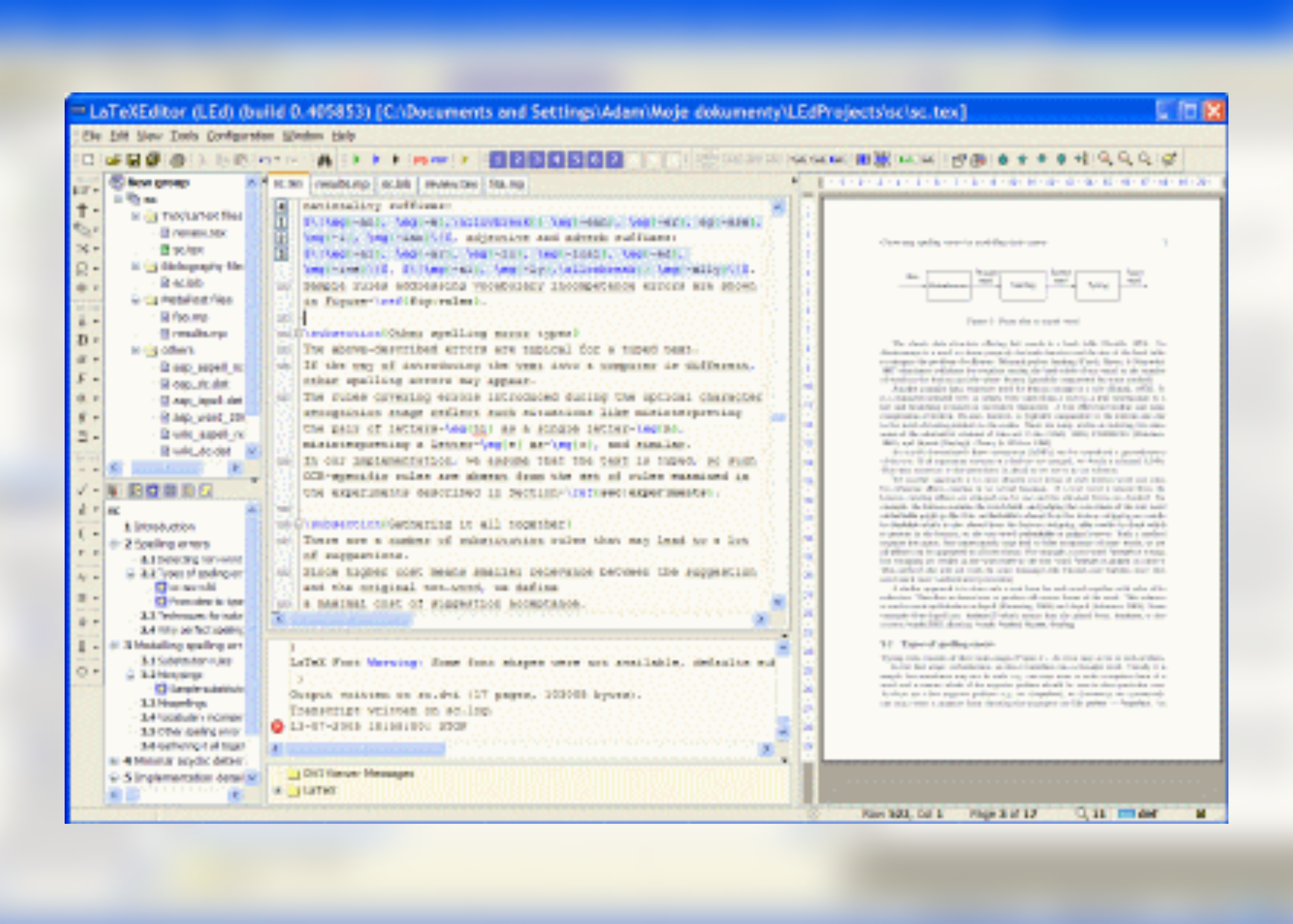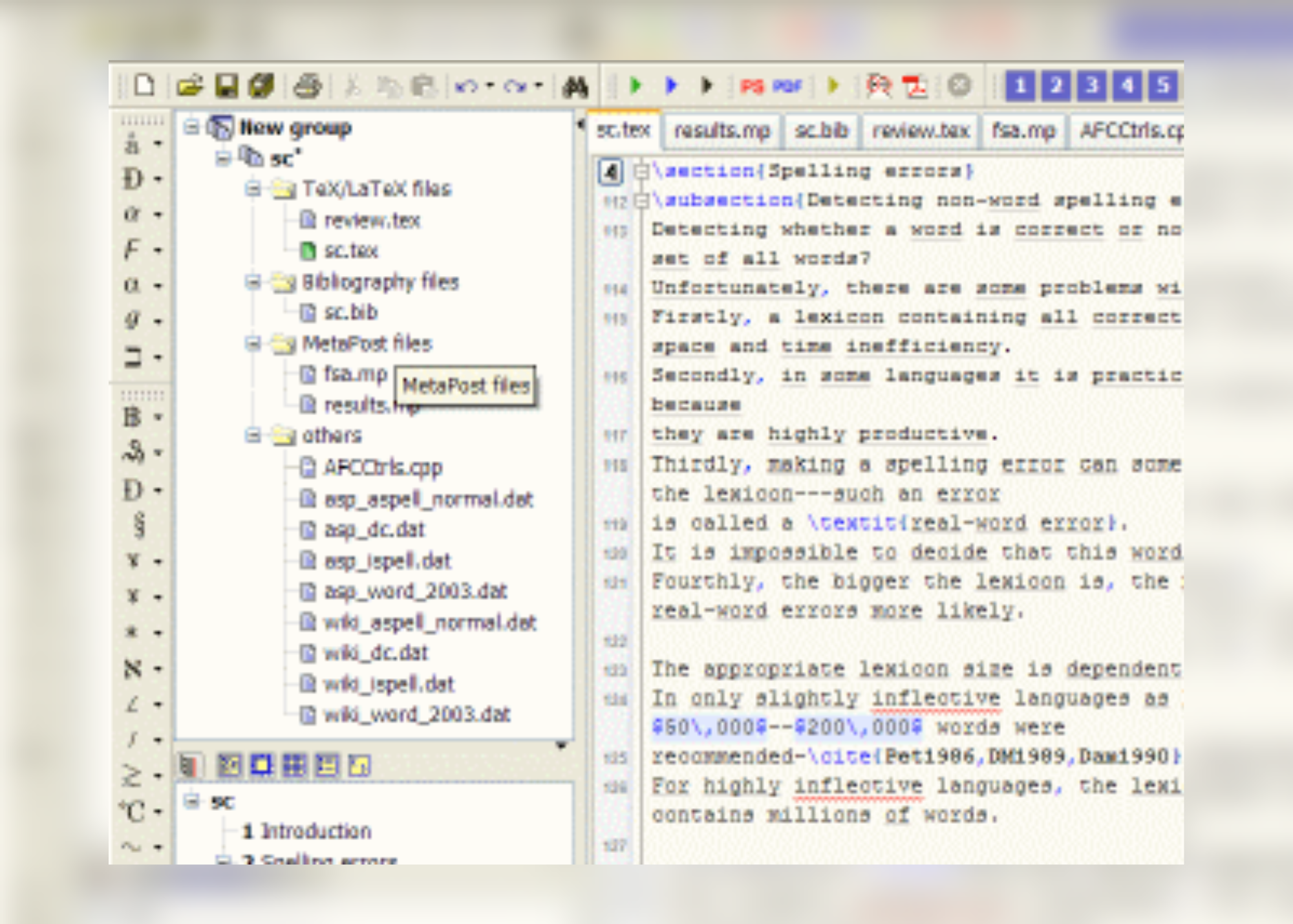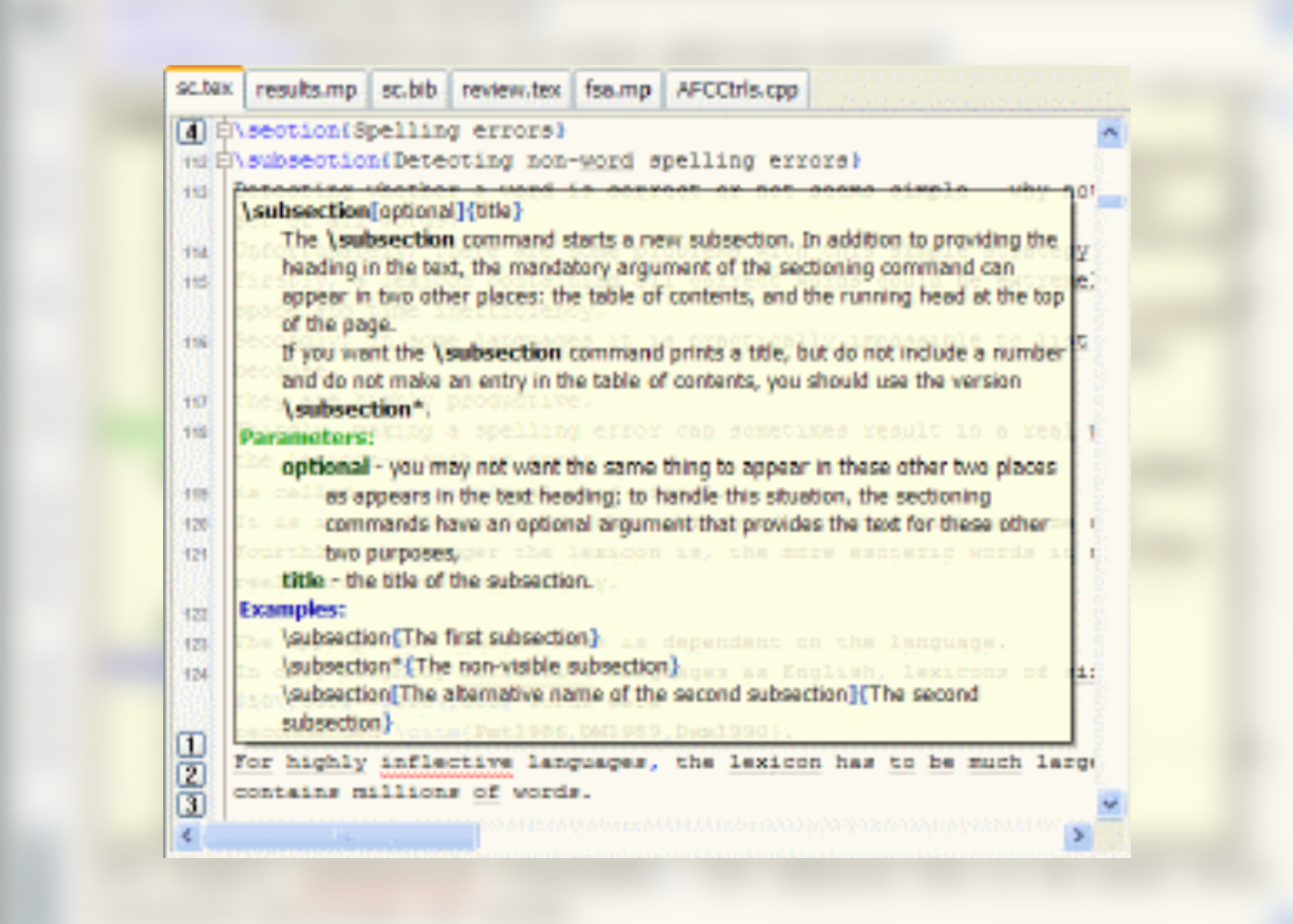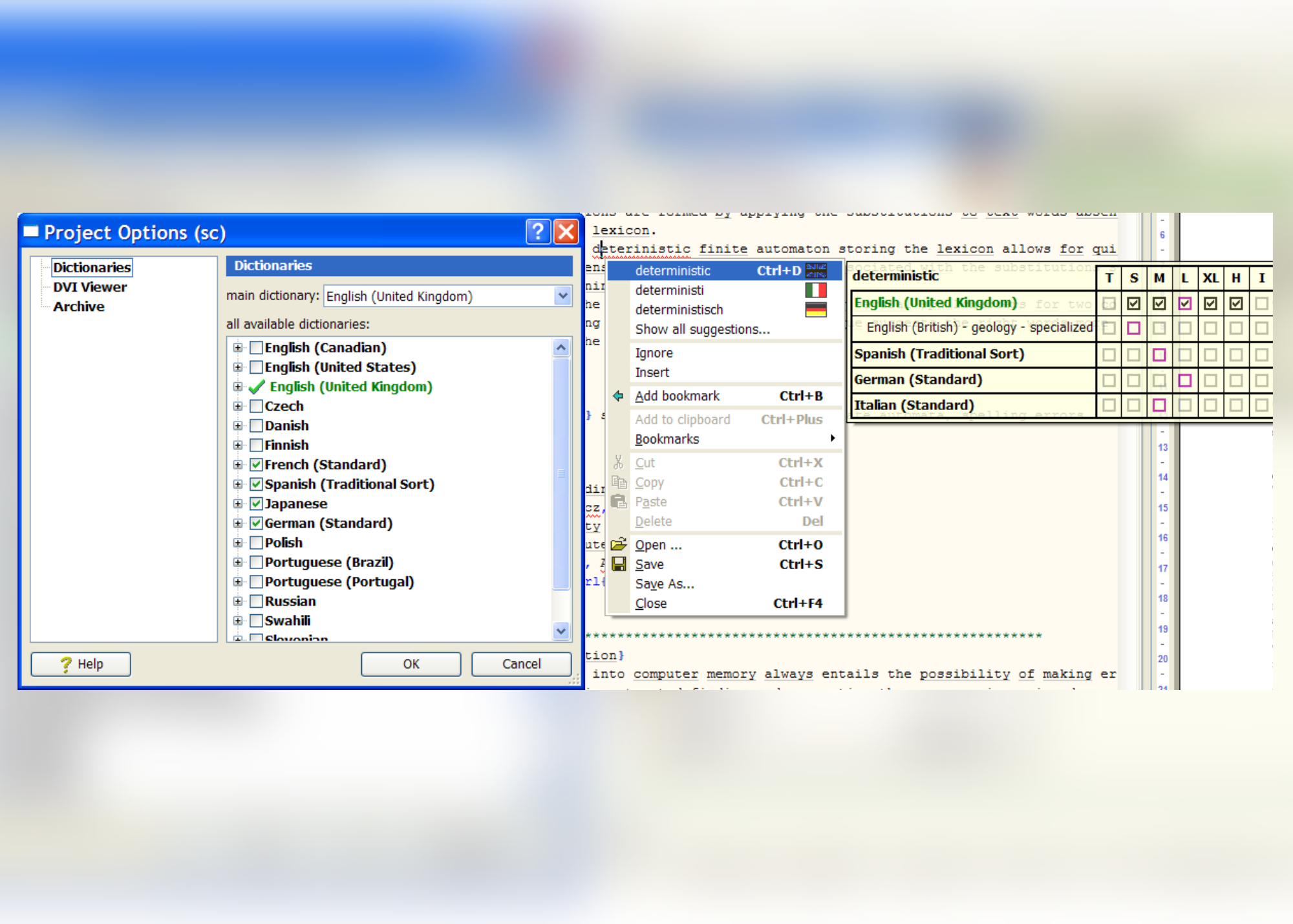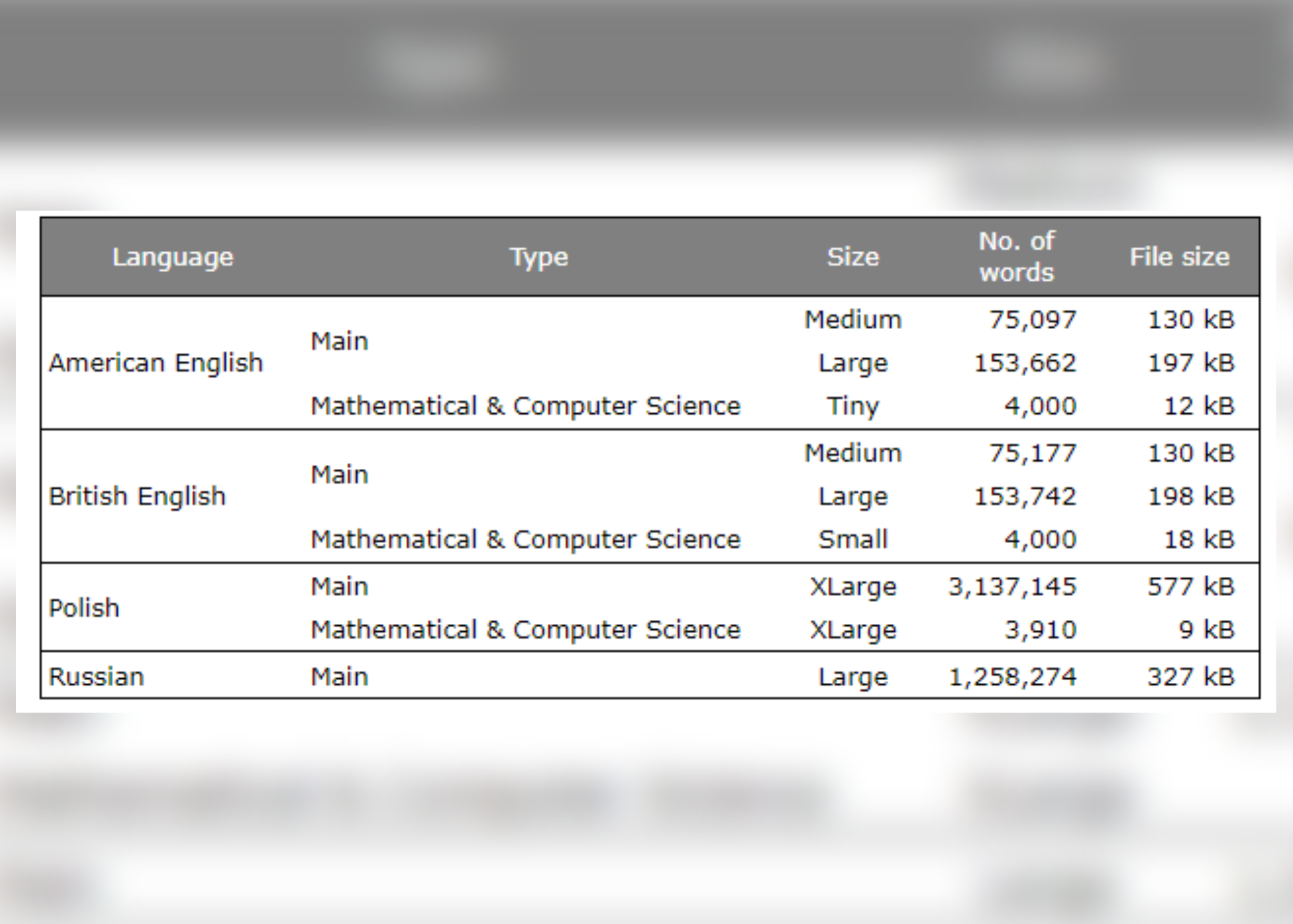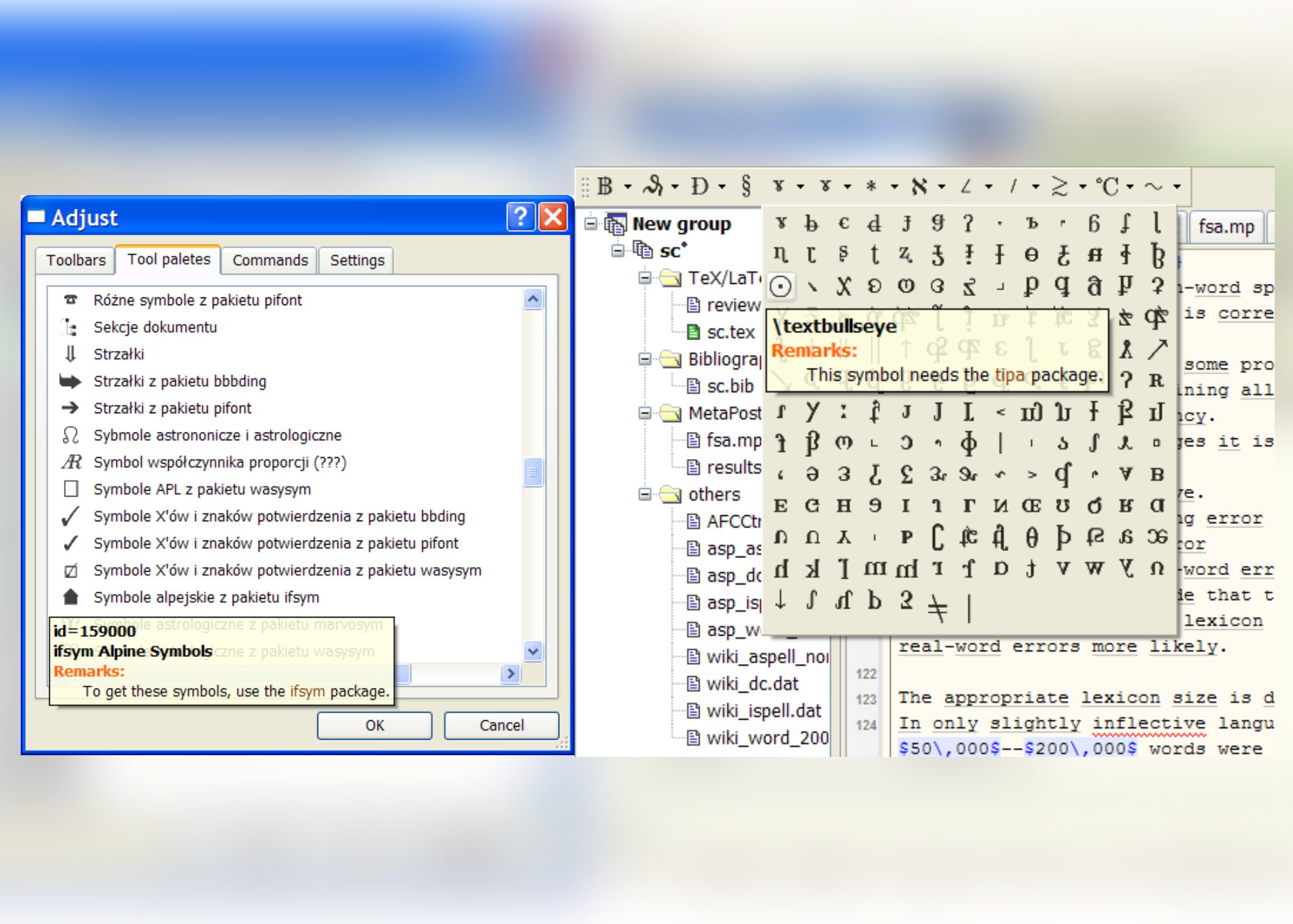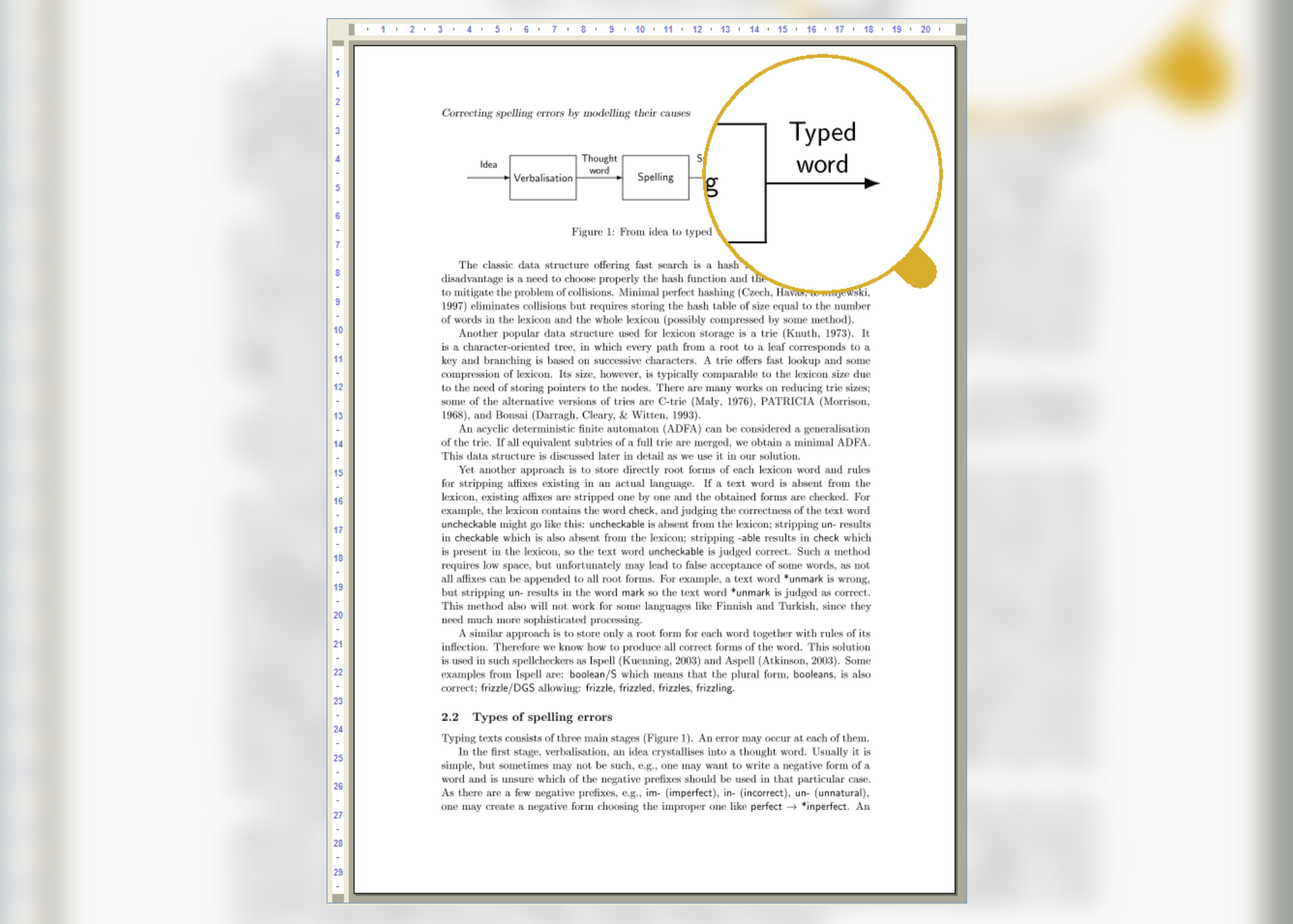More About LEd - Walkthrough To LEd And Its Specifications
LEd (LaTeX Editor) is a free environment for rapid TeX/LaTeX document processing. Our main goal in developing the editor is to make the process of TeX/LaTeX document production easier thanks to the integration of the most helpful toolsinto one application.
System Requirements
LEd works on Windows® 95/98/Me/NT4/2000/XP/2003 operating systems. LEd's capabilities vary according to the operating system used, e.g., Visual Styles from Windows® XP. It, however, works with almost full functionality also on Windows® 95.
The recommended system configuration is:
- 333 MHz processor,
- 64 MB RAM,
- 4 MB of disk space for the standard edition + space for projects (space occupation depends on the spellchecking and thesaurus dictionaries),
- Windows® 2000/XP/2003 operating system.
Compatible TeX Distributions
LEd can be used with any TeX distribution, however, its full functionality is available with a distribution based on TeXLive or MiKTeX. LEd has been tested to work correctly with:
- TeXLive 6
- TeXLive 7
- TeXLive 2003
- TeXLive 2004
- TeXLive 2005
- MiKTeX 2.4
- MiKTeX 2.5
Easy Installation Process
There are two methods to install LEd. Firstly, a user can download a zip archive and unzip it to any location. Secondly, there is a standard installer. Both methods are equivalent.
LEd does not install any third-party libraries or components. Therefore, it can be quickly installed or removed from a computer. A TeX distribution (e.g., TeXLive 2004, MiKTeX 2.4) is, however, necessary, if one wishes to use the built-in DVI viewer, also a GhostScript program is needed for handling EPS figures in DVI files.
More Features
LEd is designed to be flexible, easy to configure and extend. Some of its most important features are described below.
Environment For Rapid Document Development
LaTeX Editor is designed for rapid document creation and management. LEd's environment integrates a project manager, editor, viewer, and more.
Project Management
A project can be composed of several file types, which may be parts of the document:
- TeX/LaTeX sources,
- bibliographical data in BibTeX format,
- document class and package sources,
- MetaPost figure sources,
- METAFONT font sources,
- tables of contents, lists of figures, and tables,
- EPS files,
- files of other types.
Files of each category are grouped in a project tree for easy navigation.
In LaTeX Editor, we can work with both a single file and the whole project. It is also possible to group a number of projects into a project group.
Powerful Editor
The most important features of the document editor are:
- a number of files can be edited, each of them in a separate tab,
- for each file, ten bookmarks can be used to speed up navigation; the bookmarks are stored in a project file, so we do not lose them after closing LEd,
- contents of the file are highlighted according to file types,
- a built-in spellchecker is available,
- a built-in thesaurus is available,
- descriptive hints appear when one types a command or moves the mouse over it,
- user-defined LaTeX commands and environments are supported: they are highlighted, hints with a definition are shown, etc.,
- navigation between labels and references, bibliography items, and citations is easy,
- an extended search/replace mechanism, which allows users to mark found strings, and easily navigate between them is available,
- searching with regular expressions,
- command completion,
- user configurable command completion,
- word wrapping,
- code folding,
- 30 permanent clipboards store objects even after computer restart,
- a configurable input/output filtering mechanism is incorporated,
- large files, even several megabytes in size, are processed quickly,
- related opening and closing parentheses are highlighted with the same color.
Multilingual Support
LEd is available in six localized versions: American English, British English, Polish, Russian, French, and Italian. It can be, however, translated into other languages. (In fact, some translations were done by our users: the Russian translation by Alexey Zhlezov, and the French translation by Olivier Devineau. See the credits for details.) The only thing needed to create a localized version of LEd is to make a copy of the files containing textual resources for a particular language and translate them. If some of the resources are unavailable in that language, American English versions will be used instead. This helps the translator to work step by step.
A more detailed description of the translation process can be found on the technical details page.
Built-in Spellchecker
A built-in spellchecker, based on the work Deorowicz, S., Ciura M. G., Correcting spelling errors by modeling their causes helps in writing. Its most important features are:
- fast spellchecking - on a typical machine with 1 GHz processor the spellchecker determines word correctness of over 500,000 words per second,
- accurate suggestions - the method by which suggestions are proposed is a result of our research and we handle mistypings, misspellings (e.g., grammatical errors, phonetic errors), and vocabulary incompetence errors.
- language independence—the spellchecker is ready to work with many languages, the only things it needs are a word list for the language and the correction rules modelling common errors specific to the language,
- ability to work with dictionaries of different sizes for the same language—it is sometimes helpful to use a smaller dictionary if the writer's vocabulary is small; this minimizes the chance of typing wrong words, and can improve the suggestions,
- possibility of using specialized word lists extensions, such as mathematical and computer science vocabulary,
- user dictionary of any size,
- the standard dictionaries can be extended within the LEd with new words by the user,
- the dictionaries are stored in a highly compressed form to save disk and memory space,
- the spellchecker suggestions are adjusted to the keyboard used (e.g., Dvorak keyboard users make different mistypings than QWERTY keyboard users), so one can set the correction schemes according to the keyboard type.
The standard LaTeX Editor package contains the dictionaries for several languages (there are, however, more dictionaries ready to use in LEd available on our add-ons page). They are based on word lists provided by other people and are distributed under a different license than LEd (see the credits page). The contents of the dictionaries are described in the following table:
Built-in Thesaurus
A built-in thesaurus assists in writing. You can see a list of synonyms after moving a mouse cursor over the word in the editor. Synonyms can be also selected from a pop-up menu for a word. Currently, the thesauridata are available for British and American English only.
Note: The thesaurus is now in an experimental stage. We are working on reducing its size and number of suggestions.
Ready-made Templates For Many Types Of Documents
There are several ready-made templates for typical document types:
- papers,
- books,
- PhD Dissertations,
- Masters' Theses,
- CVs,
- letters.
The user can also provide his own templates to speed up the document development process.
Descriptive Hints
The editor highlights the contents of the processed file to make the editing process easier. Each of the highlighted keywords can be related with a hint describing its syntax. This functionality is provided to reduce the need for help usage.
In the standard package, we provide descriptive hints for standard LaTeX commands, and for commands from some extending packages. The hints we provide for LaTeX commands include up to five sections:
- syntax of the command,
- short description,
- description of the command parameters,
- example of usage,
- remarks (if something special can be said about the command).
The hints are configurable, so the user can turn off some sections, e.g., the remarks. The hints can be also made by the user for his own commands, packages, etc. (see the $ technical details$ page for details).
More Than 2200 Buttons With Symbols Existing In LaTeX
LaTeX users can use many symbols including external packages. LEd provides more than 2200 speed buttons with the most popular LaTeX symbols. They are grouped in six toolbars. Within each toolbar, the symbols are grouped in pop-up bars. Each toolbar can be easily turned on/off. The contents of toolbars as well as pop-up bars can be adjusted to user preferences with a simple drag-and-drop mechanism.
For each button representing a symbol and the pop-up bar and toolbar, a hint is provided describing the command syntax and, if necessary, which external package should be used. In the editor window, hints for symbols contain also a bitmap showing the symbol.
Built-in DVI Viewer
TeX/LaTeX compilers output DVI files. They can be viewed with a built-in DVI viewer, available with a single key press or mouse click. Its most important features are:
- print quality preview,
- support for TeX source specials (there is two-way navigation: you can double click on the previewed page to move to the related place in the source text and also double click in the contents window to show the related page in the viewer).
- easy and fast scrolling,
- magnifying glass with variable magnification and size,
- full screen preview,
- different zoom levels,
- support for EPS files.
For previewing DVI files, the proper installation of a TeX distribution (e.g., TeXLive 7) is needed, as we use fonts based on the KPATHSEA library. To display EPS pictures, GhostScript must be installed (i.e., the GSDLL32 library is used).
Automatic Archiving
The projects created in LaTeX Editor can be automatically archived as ZIP files. It is possible to define when the archive is created and which files should be stored in the backup file. The projects can also be restored from the archive if necessary.
The ZIP format was selected as the archive format because of its popularity. We, however, support not only the standard deflate compression method, but also the bzip2 method introduced into ZIP format by PKWare in version 4.6 of the ZIP specification.
Configurable Contents Panel
To make the navigation in the project easier, LEd offers a configurable contents panel. It contains the table of the document contents, i.e., chapters, sections, subsections, etc. Moreover, environments such as figures, tables, and mathematical formulas can also be seen in this panel. After double clicking an element, the user is moved to the related place in the editor window, and also to the related page in the DVI viewer.
Not Only LaTeX
LaTeX Editor is designed for TeX/LaTeX document processing. It can be, however, easily configured for working on different file types, such as:
- Perl scripts,
- HTML documents,
- Pascal program sources,
- etc.
For each file type, the user can define:
- keywords,
- descriptive hints,
- toolbars with special commands.
Final Thoughts
For detailed information on the configuration process for different document types please visit the technical details page.
